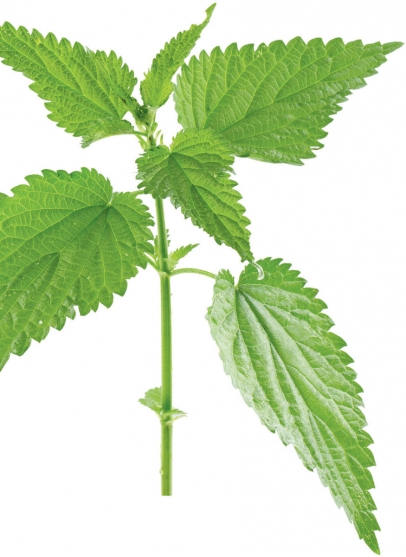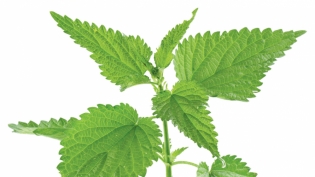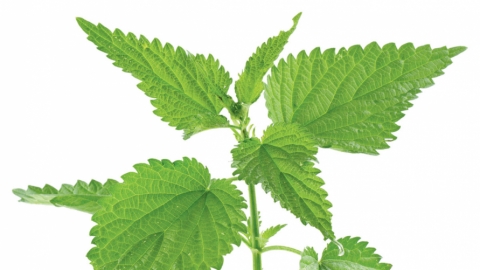Wild Greens
Stinging nettles: a nutritional boost from the backyard
While anything described as “stinging” may be last on your list of foods to try, stinging nettles can be nutritious leafy greens when picked and prepared correctly.
Stinging nettle (Urtica dioica) grows throughout the mid-Atlantic and Northeast and comes up in early spring. Nettles are often found in wet areas alongside brooks and streams, or amid high-nitrogen environments such as the rich, mucky areas along the edges of your compost pile.
Nettles are best harvested in the springtime when they are young and the leaves are most tender.
“Stinging nettles have toothy leaves and tend to be a deeper green than other herbaceous plants because they have a higher chlorophyll content,” says Amanda Midkiff, herbalist and owner of Locust Light Farm in Titusville. “However, the most obvious feature is that the underside of the leaves have little tiny needles that sting and cause irritation to the skin.”
The cause of the sting is the presence of chemicals like formic acid, histamine and acetylcholine, which some herbal practices actually use to treat certain types of inflammation.
“One of the most unique ways people use the plant is through something called urtication, which is when you intentionally touch the stinging parts of the plant to a joint that’s inflamed, often due to arthritis,” she says. “The idea is that it helps bring blood circulation to the swollen area, providing relief.”
When it comes to consuming the plant, Midkiff explains that the “needles” collapse once nettles are thoroughly steamed or cooked. When harvesting or preparing fresh nettles, one should always wear gloves and long sleeves.
“It’s also important to harvest nettles from a safe location, away from runoff areas that use sprays or other environmental toxins,” says Midkiff, who advises to harvest no more than the top third of the plant so it can continue to grow healthily.
Nettles are versatile and can be used as you would any type of cooked, leafy green. They can also be dried and used in a tea, and pair well with mint, green tea and lemon flavors. No matter how they are prepared, nettles pack a punch when it comes to nutrition.
“Like other leafy greens, nettles are a nutritional powerhouse,” says Nicole Piazza, MS, RD, of Nourish to Heal in Flemington. “They are full of calcium, which helps build strong bones, and also contain B vitamins, potassium, iron, and are a good source of beta carotene—an antioxidant that’s important for healthy eyes, skin, hair, and the immune system.”
The cause of the sting is the presence of
chemicals like formic acid, histamine and
acetylcholine, which some herbal practices
actually use to treat certain types of
inflammation.
Nettles are often used for those seeking relief of seasonal allergies. “Since nettles contain histamine, taking a small internal daily dose helps the body acclimate and produce a less severe response to allergens,” she says. “By taking [consuming dried, steamed or cooked] nettles, you’re helping your body fight inflammation, as well as boost your own immune system.”
Nettles may help with acute symptoms as well. “After taking nettles, some have seen improvement up to 15 minutes after experiencing an allergic reaction,” she says. “However, these benefits wouldn’t necessarily come from consuming a large amount all at once—nettles work better when consumed in a smaller amount taken frequently, like in a tea.”
Those who suffer from seasonal allergies should consult with a physician before adding nettles to any treatment routine. Aside from allergies, the anti-inflammatory properties of nettles extend to other parts of the body.
“The anti-inflammatory properties of nettles can help relieve symptoms of arthritis, including muscle pain, and gout,” says Piazza.
“It’s also been used holistically for decreasing pain during labor, as well as reducing symptoms of PMS and menstrual cramps.”
In fact, nettles are often used holistically in women’s health.
“In my prenatal practice, it’s standard of care for women to incorporate nettles not only for their nutrition, but also because it’s considered a vasotonic,” says Alison Morgan, L.Ac, of Alison Morgan Acupuncture in Hillsborough. “For pregnant women, hemorrhoids, spider veins and swelling are common issues, and nettles are used as a preventive medicine to reinforce the strength of the veins and arteries. It’s great for supporting the vascular integrity in the body.”
While nettles offer many health advantages for women, anyone can reap their benefits.
“In Chinese medicine, if someone has a blood deficiency, it is recommended to consume a diet high in dark, leafy greens because of their high chlorophyll content,” says Morgan. “In Western medicine, nettles are considered a blood purifier because they are high in chlorophyll, which, molecularly speaking, is very similar to hemoglobin,” she says. “Something that is a blood purifier translates to being good for skin, promoting circulation and maximizing the functions of the body.”
As the new growing season energetically unfolds, stinging nettles prepare us for it. Think of it as spring’s multivitamin, offering a boost of health and nutrition that’s easy to find, and available to all.






